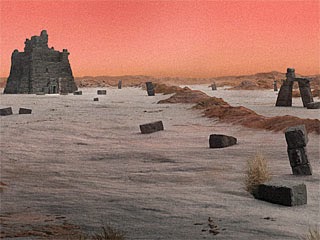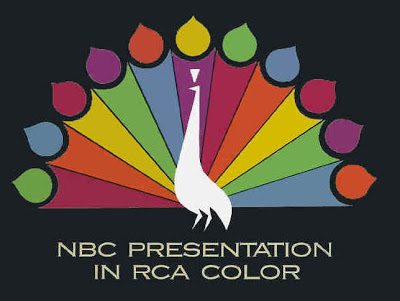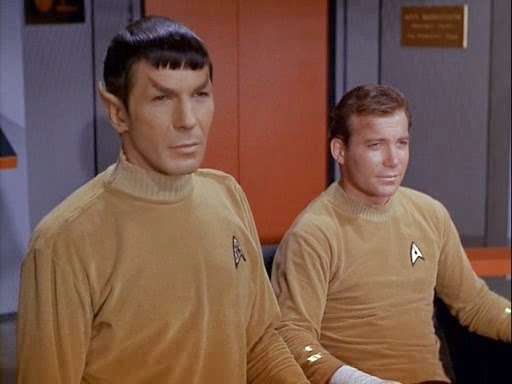Travel with me to September 8, 1966.
It’s a Thursday night, and there’s not much good on television, mostly reruns. But there’s a new show premiering on the local NBC affiliate, one of the three stations your brand new color television can tune in. You’re a science fiction fan, and you’ve read about a show coming on at 8:30 called Star Trek, and you decide to give it a look.
You’ve read about this Star Trek, perhaps. Like many magazines of the day, the August 1966 issue Kiplinger’s Personal Finance did a Fall TV preview that described the new show thus:
“Star Trek,” featuring a “cruiser-size star ship” whose science officer has a “precise logical turn of mind inherited from his father, a native of the Planet Vulcanis, who married an Earth woman.”
So you tune in, adjust the color on your set, and sit back to watch the first episode of a television series that will eventually go on to spawn 79 episodes, five sequel series, innumerable comics and novels, a plethora of toys, games and other merchandising, and eleven major motion pictures. The series will inspire parodies and pastiches, launch catch phrases, rename a Space Shuttle, inspire the inventors of much of the technology we today take for granted such as the iPad, the cellphone and the DVD, help launch modern fandom, and earn the owners of the franchise over a billion dollars. Also, along the way, it will give the world an example of the kind of people we want to be: the heroes of Star Trek embodied the best of our human ideals. The problems of the past, problems we still face today, have all been solved by these humans in the future through the use of their reason and compassion.
But we don’t know any of this, of course.
Right now, we’re in your living room on a warm September Thursday in 1966, watching the first episode of a new television series on our new color television. Being a reasonably well read and educated science fiction fan, we’re prepared for many of the concepts about to be presented in this new show. We’ve read some of A.E. Van Vogt’s Space Beagle stories so the idea of a “cruiser size starship” is not alien to us. It seems to be a very logical way to get humans to the stars for the purpose of exploration. In 1956 we watched Forbidden Planet in theaters, excited that more cerebral science fiction media was becoming accepted and gaining an audience.
Perhaps we remember watching Captain Video, Space Patrol and Rocky Jones, Space Ranger as a kid. We are certainly aware of Flash Gordon and Buck Rogers. Last year CBS premiered a black and white series from Irwin Allen called Lost in Space. Early on the show had some potential, but it quickly degenerated into a kids show. The robot looked cool, though.
The first shot of Star Trek shows a spacecraft, the “cruiser-size starship” promised in the magazine, in orbit around a planet. The planet looks a little like we might imagine Mars to look close up, but remember that this is 1966. We don’t really know yet what Mars looks like close up. We’ve only seen it through our telescopes. The unmanned NASA Mars missions haven’t started yet.
The starship sails past us with a low rumbling sound. Uh-oh. Don’t the producers of this show know that there’s no sound in space? Not a good sign.
 |
| Our first sight of Star Trek, the USS Enterprise in orbit around Planet M-113. |
“Captain’s Log, Stardate 1513.1. Our position, orbiting Planet M-113.”
These are the first words spoken on Star Trek, and it’s a lot of exciting, unexplained information given in a matter of fact style. The planet isn’t Mars, it’s M-113. It’s not in our solar system, obviously. In fact, we don’t know where this planet might be in relation to Earth. At this point in our understanding of the universe we don’t even have proof that planets, outside of the nine we see in our own solar system, exist at all (Pluto is still considered a planet at this point.) We suspect there are planets out there, orbiting distant stars, but we have no proof. The existence of extrasolar planets was not confirmed until 1988, twenty two years later.
 |
| Lt. Uhura |
We cut from the exterior of the starship to the inside, to our first view of the bridge, which we understand to be the control room of the ship.
We see three people manning the bridge, but suddenly the word “manning” seems dated and inadequate. One of the people at the controls of this starship is a woman, and a black woman at that. The beautiful Nichelle Nichols, as Lt. Uhura, is sitting at what we’ll eventually learn is Navigation. Seated next to her, of apparently equal rank, is a white man, Lt. Leslie. (Leslie was played by Eddie Pasky, who would go on to be in 57 episodes of Star Trek, more than either Chekov or Sulu.)
Getting black actors onto major network shows was all the rage on television in the 1960’s, since Bill Cosby made such a splash on I Spy with Robert Culp. But Star Trek was different, because in this future world, being a black woman or a white man doesn’t matter any more: are all equal in this future world. We are judged not by the color of our skin, but by the content of our character. The dream of Martin Luther King Jr. has become a reality.
Martin Luther King Jr. is fighting for the rights of all Americans, and less than two years away from an assassin’s bullet. Women, called feminists, are fighting for the rights of women. Roe vs Wade won’t be decided until 1973. The 19th Amendment, guaranteeing a woman’s right to vote, was only 46 years old. Star Trek was demonstrating that such issues and concerns were in a sense already decided, in the future. A future that was multi-racial and supported the equality of the sexes.
 |
| Spock |
Sitting behind the two officers on the bridge was a “man” in a blue shirt. An instant later we see him in close-up. Shatner’s narration continues, “On board the Enterprise, Mr. Spock, temporarily in command.” Spock is a humanoid alien with an odd haircut and pointed ears, played by Leonard Nimoy. He’s an alien, and he’s in command, even if only temporarily. So far have we come in this new future of Star Trek, that we haven’t only settled the issues between the sexes and between the races, we’ve actually gone out into space and met all new people to be friends with, free of prejudice. As viewers we are instantly intrigued by Spock, but we don’t know him yet.
 |
| Planet M-113, the ruins of an ancient and long dead civilization. |
So now we have our fist clue as to why we’re out in space, traveling on the starship Enterprise to planets like M-113. We’re learning things. Exploring the universe, and expanding what we know.
We watch as for the first time, three figures materialize on an alien planet, as if by magic. But we know this isn’t magic. It’s science. Somehow humans have learned to convert matter into energy and then transmit that energy to where they want it, allowing for near instant travel. We might have seen a horror movie with Vincent Price, called The Fly, in which such experimentation has gone horribly wrong. But this show isn’t about horror. It’s about humanity bravely facing the unknown.
 |
| “Beaming Down” |
Materializing on the planet are three figures. DeForrest Kelly as Dr. McCoy, William Shatner as Captain Kirk, and Michael Zaskow as Crewman Darnell.
Darnell won’t survive the first act, and will be the first of many declared dead by Dr. McCoy over the course of this series. Shatner appears for the first time on television as Captain Kirk, in his yellow command uniform, coalescing out of thin air. Summoned into existence by technology indistinguishable from magic, a new space hero for the new space age. And we’re going into space, for real, right now as we watch this episode in 1966. In less than three years Star Trek will be cancelled, and a man will walk on the moon. The NASA Apollo program is in full swing.
At this point in the episode information has been hitting us fast and furiously.
Space ships, no, star ships, carrying a cross section of humanity (and aliens) to unimaginably distant planets are a reality. These future humans have amazing technology, besides the ability to build these fantastic vehicles, they have also developed matter/energy transporters fine enough to send humans through the ether. On the bridge where we left Mr. Spock, we saw a frenzy of futuristic blinking lights and screens. The future is a technological wonderland. Suddenly we are aware of the synchronicity: we are watching a wonderful, technological future unfold on our own wonderful, futuristic technology: color television.
Star Trek is a show that screamed to be in color.
It’s almost impossible to imagine it not in color. The uniforms worn by the crew of the Enterprise were yellow, red and blue, bright primary colors that divided the crew by specialties. Yellow for Command, red for engineering and security, blue for medical and sciences. The bridge set sparkled with colored lights and screens. The planet sets and skies were dusty red. The first thirty seconds of Star Trek was information and sensory overload. Everything about it was bright and shiny and new.
This was the first thirty seconds of Star Trek.
It was a show that immediately set out to satisfy, defy, and exceed expectations. Star Trek presented us not just with the future, but with the best possible future. Take away the spaceship, the the transporters and the aliens, and Star Trek is still the best possible future. A future ruled not by greed and superstition, but by reason and compassion. The sixties were dark times of assassination, political and racial turmoil, and the ever present threat of thermonuclear war, yet somehow, out of that, a group of people, lead by Gene Roddenberry, were postulating a future free of all such problems.
A true testament to the human spirit.















































































































1 Comment